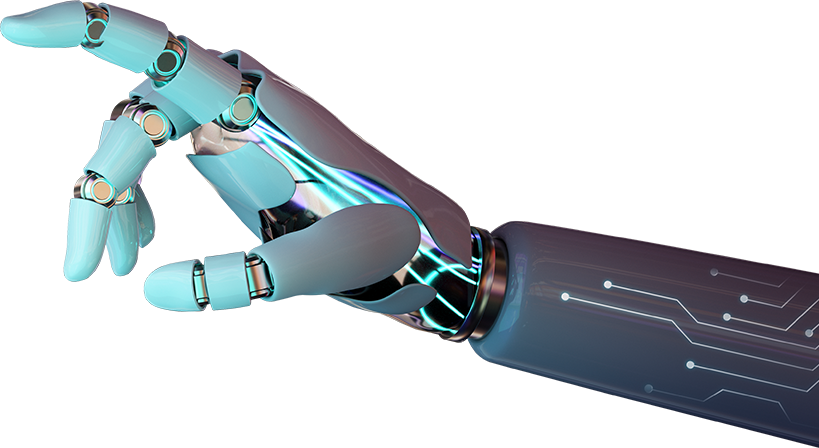In the fast-evolving world of technology, tackling complex computer vision challenges can feel daunting. Yet, with expert strategies and innovative solutions, professionals can transform obstacles into opportunities. Dive into cutting-edge research and emerging technologies that promise to revolutionise image recognition and object detection. Stay ahead of the curve and optimise algorithms for better results in the dynamic field of vision systems.
Table of contents
ToggleUnderstanding the complexity of computer vision challenges
Computer vision challenges encompass a range of issues that complicate development. Key obstacles include:
- Image variability: Diverse lighting and angles affect accuracy.
- Noise interference: Data noise leads to misinterpretation.
- Object occlusion: Partial views hinder recognition.
- Data volume: Large datasets require efficient processing.
- Real-time processing: Speed constraints demand robust algorithms.
Strategic solutions involve leveraging deep learning and optimising data pipelines for enhanced performance.
Common obstacles in image recognition
- Inadequate training data
- Complexity of real-world scenarios
- Variability in image quality
- Challenges in feature extraction
- Bias in datasets
Image recognition faces numerous hurdles. These include the difficulty of managing diverse data and ensuring high-quality input. Leveraging core algorithms in image analysis helps mitigate these issues, enhancing system accuracy and reliability.
Overcoming limitations in object detection
Object detection often encounters limitations such as poor accuracy in cluttered environments. Enhancing performance requires deploying advanced deep learning models like YOLO and SSD, which offer faster and more precise detection. Employing techniques like data augmentation and transfer learning optimises these models, enabling better adaptation to various scenarios. Additionally, leveraging cloud computing resources aids in handling computational demands, ensuring robust and scalable solutions.
Managing large-scale data in vision systems
Handling large-scale data in vision systems requires innovative strategies. Efficient data management underpins the success of computer vision projects. Key approaches include:
- Utilising cloud-based storage solutions for scalable data handling.
- Implementing advanced data compression techniques to reduce storage demands.
- Adopting parallel processing architectures to enhance data throughput.
These methods ensure that vision systems process vast datasets effectively, maintaining performance and accuracy. Leveraging these strategies, professionals can mitigate common computer vision challenges associated with data volume, achieving robust system functionality.
Cutting-edge research and emerging technologies
Recent advancements in deep learning have revolutionised computer vision, enabling more accurate image analysis. Convolutional neural networks now outperform traditional methods. Artificial intelligence aids in tackling data complexity. Emerging technologies such as GANs enhance image generation capabilities. Quantum computing promises unprecedented processing speeds. These innovations pave the way for overcoming existing vision challenges.
Advances in deep learning for computer vision
Deep learning transforms computer vision by enhancing image classification accuracy. Techniques like convolutional neural networks excel in feature extraction. Transfer learning accelerates model deployment, while unsupervised learning reveals new data patterns. These advances empower professionals to tackle complex vision challenges, optimising algorithm performance and driving technological innovation.
The role of artificial intelligence in solving vision challenges
Artificial intelligence plays a pivotal role in addressing computer vision challenges. AI enhances the capability to process and analyse complex visual data efficiently. Key AI-driven solutions include:
- Improved image recognition through neural networks
- Enhanced object detection with convolutional layers
- Faster data processing using GPUs
- Automation in data annotation
- Real-time analytics via AI models
- Adaptive learning systems for evolving datasets
Practical strategies for implementation
To tackle computer vision challenges effectively, professionals should focus on integrating new technologies like AI and deep learning into existing systems. Leveraging modular architectures allows for seamless updates and scalability. It’s crucial to optimise algorithms to enhance performance, ensuring they handle large-scale data efficiently. Incorporating feedback loops aids in refining models continuously. Adopting a collaborative approach by engaging with interdisciplinary teams accelerates problem-solving, fostering innovation and enabling more robust solutions in dynamic environments.
Integrating new technologies into existing systems
Integrating new technologies into existing systems poses significant challenges in computer vision. This process requires careful planning and execution to ensure seamless operation and enhanced performance. Addressing compatibility and scalability issues is crucial for success.
- Assess system compatibility with new technologies
- Ensure data integrity and consistency
- Develop robust transition plans
- Train personnel on new systems
- Monitor and evaluate performance regularly
Optimising algorithms for better performance
Enhancing algorithm efficiency in computer vision demands precise strategies. Improving performance involves evaluating computational resources, refining data processing methods, and leveraging hardware capabilities.
- Streamline code for faster execution.
- Utilise hardware acceleration like GPUs.
- Implement advanced data preprocessing techniques.
- Continuously test and refine algorithm parameters.
Case studies and real-world applications
Industry leaders demonstrate solutions to complex computer vision challenges. One notable example involves autonomous vehicles. They use advanced algorithms to enhance image recognition. These vehicles showcase real-world implementations in computer vision, proving the viability of sophisticated systems in everyday scenarios.
Successful examples of overcoming vision challenges
Recent successes in overcoming computer vision challenges demonstrate innovative strategies. Industry leaders utilise advanced techniques to tackle complex issues. Here are some noteworthy examples:
- Using neural networks for high-accuracy image recognition
- Employing GANs to enhance low-light images
- Implementing edge computing for real-time processing
- Leveraging synthetic data to train robust models
- Integrating AI with IoT for dynamic object detection
- Optimising algorithms with transfer learning techniques
Lessons learned from industry leaders
Industry leaders in computer vision have distilled key lessons to tackle complex challenges. Their insights guide professionals in refining their strategies. Consider these pivotal learnings:
- Embrace cross-disciplinary teams to enhance innovation
- Utilise scalable data pipelines for efficient processing
- Leverage transfer learning for rapid deployment
- Adopt agile methodologies to adapt swiftly to new trends
These strategies ensure sustained growth and resilience in ever-evolving environments.
Future trends and opportunities
Anticipating future breakthroughs in computer vision involves leveraging quantum computing and neuromorphic chips. These innovations enhance processing capabilities and energy efficiency. As edge computing gains traction, real-time analytics become crucial. Professionals must adapt to evolving machine learning models and prepare for autonomous systems integration. Staying abreast of these trends ensures readiness for upcoming challenges and maximises opportunities in the ever-evolving vision landscape.
Predicting the next breakthroughs in computer vision
| Breakthrough | Impact |
|---|---|
| Quantum Computing | Enhances processing power |
| Edge AI | Reduces latency |
| Self-Supervised Learning | Minimises data dependency |
Preparing for upcoming challenges in the field
Professionnels de la vision par ordinateur doivent anticiper l’évolution rapide des technologies. Ils bénéficient d’une veille technologique continue sur les algorithmes d’apprentissage profond et l’IA. L’adaptation des systèmes aux nouvelles méthodes de traitement de données améliore la capacité d’innovation. Les collaborations interdisciplinaires offrent des perspectives inédites face aux défis émergents du secteur.
Frequently Asked Questions
What are some common obstacles in image recognition?
Image recognition often faces issues like occlusion, varying lighting conditions, and low-resolution images, which can hinder accuracy.
How can limitations in object detection be overcome?
Utilising advanced algorithms and integrating deep learning models significantly enhances object detection accuracy and efficiency.
What strategies exist for managing large-scale data in vision systems?
Implementing data pre-processing techniques and leveraging cloud-based solutions facilitates effective handling of vast datasets.
What role does artificial intelligence play in solving vision challenges?
AI enhances predictive capabilities, optimises processing power, and aids in creating more robust vision systems, addressing complex challenges.
How can new technologies be integrated into existing systems?
Adopting modular architectures and ensuring compatibility with legacy systems allows seamless integration of emerging technologies.






